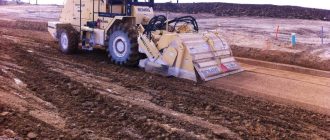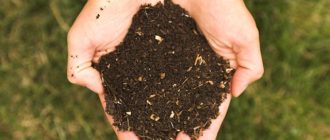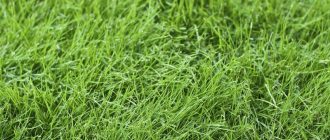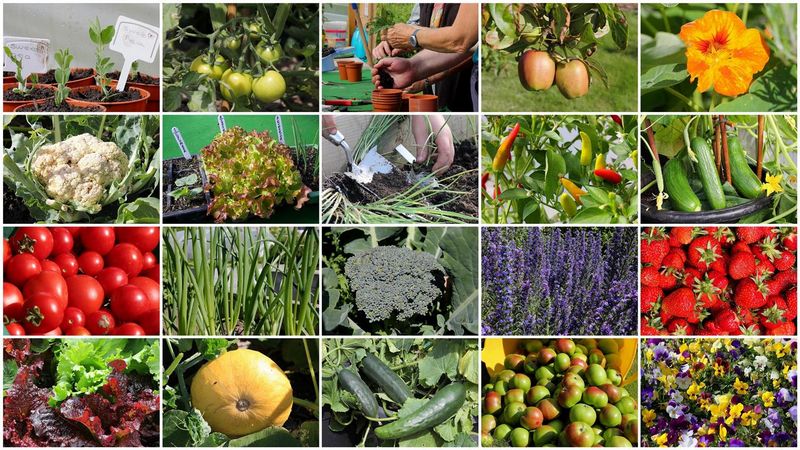
Spring Means a Busy Growing Season is Coming
As spring approaches, gardeners and farmers around the world eagerly prepare for the busy growing season ahead. With longer days and warmer temperatures, this season offers the perfect opportunity to tend to our plants and watch them thrive. Whether you have a small backyard garden or acres of farmland, now is the time to roll up your sleeves and get ready for a productive spring.
One of the key aspects of this season is planning. Before diving into the planting process, take the time to assess your space and determine what crops will be most successful in your area. Consider the climate, soil conditions, and available resources to maximize your chances of a successful harvest. By carefully selecting the right plants for your region, you can ensure that your efforts will be rewarded with a bountiful yield.
Spring also brings with it an abundance of growth and renewal. As nature awakens from its winter slumber, it’s the perfect time to cultivate new ideas and explore innovative techniques for growing plants. From vertical gardening to hydroponics, there are endless possibilities to experiment with and add a touch of creativity to your gardening endeavors. Embrace this season as a time of learning and discovery, and you may be surprised at the new ideas and practices that emerge.
Lastly, don’t forget to take a moment to appreciate the beauty of spring. As flowers bloom and trees regain their lush green foliage, the world becomes a vibrant and picturesque place. Take breaks from your busy schedule to sit back and enjoy the sights and sounds of nature awakening all around you. Remember, while productivity is important, it’s also essential to find moments of tranquility and serenity in the midst of the busy season. Soak in the beauty of spring and let it inspire you to create your own little oasis of growth and abundance.
Prepare Your Garden for Spring
With the busy growing season coming up, it’s important to prepare your garden for a successful spring. Taking the time to prepare your garden now will set you up for a productive season ahead. Here are some tips to get started.
First, clear out any debris or dead plants from last season. This will help prevent any diseases or pests from lingering in your garden. Remove any weeds and make sure the soil is ready for new plants.
Next, fertilize your soil to provide essential nutrients to your plants. Choose a fertilizer that is suitable for the type of plants you will be growing. This will help them grow strong and healthy.
Consider starting seeds indoors if you live in an area with a short growing season. This will give your plants a head start and allow you to transplant them outside when the weather is warmer. Make sure to provide them with sufficient light and water.
Plan out your garden layout and decide what plants you want to grow. Consider the amount of space and sunlight each plant needs and group similar plants together. This will help maximize your garden’s productivity.
Finally, make sure to water your plants regularly and monitor them for any signs of pests or diseases. Early detection can help prevent any issues from spreading and damaging your plants. Stay on top of pruning and weeding as well to keep your garden looking neat and tidy.
By taking these steps to prep your garden for spring, you will be setting yourself up for a successful growing season. Enjoy the rewards of your hard work as you watch your garden flourish and thrive!
Choose the Right Seeds for Your Plants
With spring coming, it’s time to start getting busy in the garden and start planning for a productive growing season. One of the most important decisions you’ll make is choosing the right seeds for your plants.
When it comes to selecting seeds, there are a few factors to consider. First and foremost, think about the climate and conditions in your area. Different plants thrive in different environments, so choose seeds that are suited to your specific location.
Next, consider the type of plants you want to grow. Are you looking to cultivate vegetables, flowers, or herbs? Each type of plant requires different seeds, so make sure you select accordingly.
In addition, think about your level of gardening experience. If you’re a beginner, it may be best to start with seeds that are easy to grow and require minimal care. On the other hand, if you’re an experienced gardener looking for a challenge, you can choose more advanced seeds that require specialized care.
Lastly, don’t forget to consider personal preferences. Do you have a favorite vegetable or flower that you’d love to see in your garden? Choosing seeds that align with your preferences will make gardening even more enjoyable.
By taking the time to choose the right seeds for your plants, you can set yourself up for a successful growing season. So, do some research, make a plan, and get ready to watch your garden flourish!
Start Seeds Indoors for Early Growth
With spring coming and the growing season just around the corner, it’s time to start thinking about getting your garden ready. One way to get a head start is to start your seeds indoors.
Starting seeds indoors allows you to control the growing conditions, ensuring that your plants get the best start possible. It also gives the plants a chance to establish strong roots before they are transplanted outdoors.
Here are some tips to help you get started:
- Choose the right containers: Use trays or pots with drainage holes to prevent waterlogged soil.
- Use high-quality soil: Use a seed-starting mix that is light and well-draining for optimal growth.
- Provide adequate light: Place your seeds in a sunny window or use grow lights to provide the necessary light for growth.
- Water properly: Keep the soil evenly moist, but be careful not to overwater and cause root rot.
- Transplant outdoors at the right time: Once the danger of frost has passed, gradually acclimate your seedlings to outdoor conditions before transplanting them into the garden.
By starting your seeds indoors, you can give your plants a head start on the growing season and enjoy an abundance of fresh produce when spring arrives.
Clean and Maintain Your Gardening Tools
With the growing season coming, it’s time to get your gardening tools ready for a busy and productive time in the garden. Cleaning and maintaining your tools is an essential task to ensure they work effectively and last longer.
Start by thoroughly cleaning your tools. Remove any dirt and debris from the surface using a brush or hose. For stubborn dirt, use a mixture of water and mild soap. Make sure to dry your tools thoroughly after cleaning to prevent rust or corrosion.
Next, inspect your tools for any damage or wear. Check the handles for cracks or splintering, and replace them if necessary. Sharpen blades and pruning shears to ensure clean and precise cuts. Lubricate any moving parts or hinges to keep them functioning smoothly.
Additionally, consider organizing your tools for easy access and storage. Invest in a sturdy toolbox or wall-mounted storage system to keep your tools organized and protected. This makes it easier to find and grab the right tool when you need it, saving you time and effort.
Remember to wear protective gloves and eyewear while cleaning and maintaining your gardening tools. Safety should always be a priority when working with sharp or potentially harmful tools.
By taking the time to clean and maintain your gardening tools, you’ll be setting yourself up for a successful and enjoyable growing season. Your tools will be ready to tackle any task in the garden, allowing you to focus on the joy of planting, tending, and harvesting.
Plan Your Garden Layout for Optimal Yield
Spring is a busy and exciting time for gardeners. With the growing season coming, it’s important to start planning your garden layout to ensure optimal yield. A well-planned garden not only maximizes your space but also improves the efficiency of your gardening efforts.
When planning your garden layout, consider the following factors:
- Available sunlight: Assess the amount of sunlight that different areas of your garden receive throughout the day. This will help you determine the best placement for sun-loving plants.
- Soil quality: Test your soil to understand its pH level and nutrient content. This information will guide you in selecting plants that are best suited for your soil type.
- Plant compatibility: Pay attention to the compatibility of plants when deciding where to place them in your garden. Some plants may enhance each other’s growth, while others may compete for resources.
- Spacing: Allow enough space between plants to ensure proper airflow and prevent overcrowding. Adequate spacing also facilitates watering and maintenance tasks.
- Succession planting: Plan for succession planting to maximize your harvest. By planting different crops in stages, you can enjoy a continuous supply of fresh produce throughout the growing season.
Take the time to sketch out your garden layout, keeping in mind the specific needs of the plants you intend to grow. Consider the height and spread of plants when deciding where to place them in your garden. Group plants with similar watering and nutrient requirements together to streamline your gardening tasks.
Remember, a well-planned garden layout not only improves your chances of a successful harvest but also makes your gardening experience more enjoyable. So take advantage of spring’s arrival and start planning your garden layout now!
Protect Your Plants from Pests and Diseases
With the season of growing coming soon, it’s important to take steps to protect your plants from pests and diseases. By being proactive, you can ensure a healthy and productive garden.
- Inspect your plants regularly for any signs of pests or diseases. Look for chewed leaves, discolored spots, or wilting plants. Early detection is key to preventing the spread of pests and diseases.
- Remove any infected or infested plants immediately to prevent the spread to other plants. Dispose of them properly to avoid further contamination.
- Implement natural pest control methods, such as companion planting or attracting beneficial insects, to help keep pest populations in check.
- Consider using organic pesticides or insecticidal soaps as a last resort. Follow the instructions carefully and use them sparingly to minimize harm to beneficial insects.
- Maintain good hygiene in your garden by regularly cleaning tools and equipment. This will help prevent the spread of diseases.
- Water your plants properly to avoid creating a hospitable environment for pests and diseases. Avoid over-watering and water in the morning to allow the foliage to dry out during the day.
- Keep weeds under control as they can harbor pests and diseases. Remove weeds regularly and use mulch to suppress their growth.
- Encourage plant health by providing adequate sunlight, nutrients, and space for proper air circulation.
By following these tips, you can protect your plants from pests and diseases, ensuring a successful and bountiful growing season.
Use Organic Fertilizers to Nurture Your Soil
With spring coming and the growing season just around the corner, it’s time to start preparing for a busy time in the garden. One important aspect of successful gardening is nurturing your soil, and using organic fertilizers can be a great way to do that.
Organic fertilizers are derived from natural materials, such as compost, manure, and bone meal. Unlike synthetic fertilizers, which are made from chemicals, organic fertilizers provide essential nutrients to your plants while also improving the overall health of your soil.
One of the main benefits of using organic fertilizers is that they release nutrients slowly over time. This means that your plants can access these nutrients as they need them, rather than being overloaded with a sudden burst of synthetic fertilizers. This slow release of nutrients also helps to prevent nutrient leaching, which can occur with synthetic fertilizers and lead to pollution of nearby water sources.
In addition to providing nutrients, organic fertilizers also help to improve soil structure. They can increase microbial activity in the soil, promote earthworm populations, and enhance water retention. All of these benefits contribute to healthier plants and a more sustainable garden in the long run.
When choosing organic fertilizers, there are a few things to consider. Look for products that are labeled as certified organic, as this ensures that they meet certain standards for organic production. You can also consider using homemade compost or compost tea, which are great options for recycling organic matter from your own garden.
So as you get ready for the busy growing season ahead, don’t forget to give your soil some love. Using organic fertilizers can help to nurture your soil, provide essential nutrients to your plants, and promote a healthy and productive garden.
Implement Watering Techniques for Healthy Plants
With the coming of spring, gardeners will soon find themselves busier than ever as the growing season begins. One important aspect of successful gardening is properly watering your plants. Implementing proper watering techniques will ensure that your plants stay healthy and thrive throughout the season.
Adequate watering is essential for your plants’ overall health. While it’s important not to over-water, it’s equally important not to under-water. Finding the right balance can be tricky, but with a few simple techniques, you can ensure that your plants receive the perfect amount of water.
One technique is to water deeply and infrequently. This means giving your plants a good soaking, allowing the water to penetrate deep into the soil. This encourages deep root growth, which will result in stronger, healthier plants. Watering deeply also helps to prevent the soil from drying out too quickly, reducing the need for constant watering.
Another technique is to water your plants in the early morning. This allows the plants to absorb the water before the sun gets too hot, reducing the risk of evaporation. Watering in the morning also helps to prevent fungal diseases, as the foliage has time to dry before nightfall.
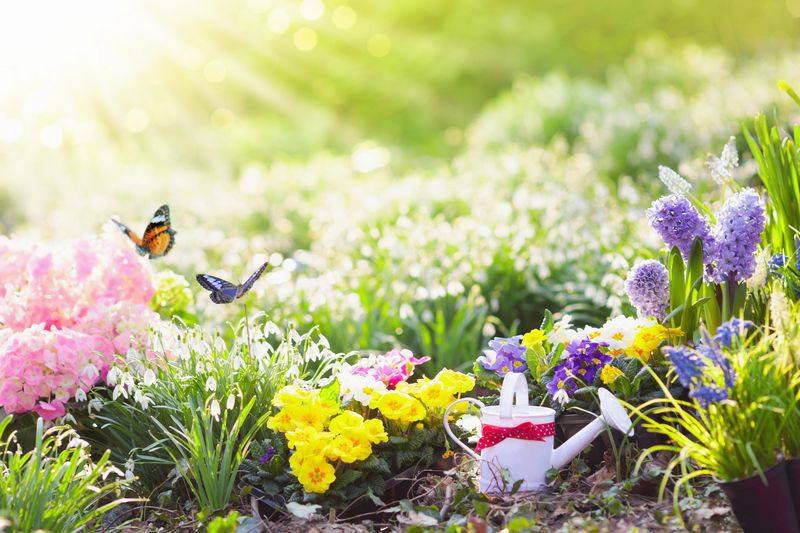
Using a drip irrigation system is another effective watering technique. This method allows the water to be delivered directly to the plant’s root system, reducing water waste and minimizing the risk of over-watering. Drip irrigation systems also help to keep the foliage dry, preventing the spread of diseases.
Monitoring the moisture level of your plants is crucial for proper watering. Using a moisture meter or simply checking the moisture content of the soil with your finger can help you determine when it’s time to water. Remember to adjust your watering schedule based on the weather conditions, as plants may require more water during hot, dry spells.
| Watering deeply and infrequently | Promotes deep root growth and reduces the need for constant watering |
| Watering in the early morning | Allows plants to absorb water before the sun gets too hot and reduces the risk of fungal diseases |
| Using a drip irrigation system | Delivers water directly to plant roots, reduces water waste, and prevents the spread of diseases |
| Monitoring moisture level | Helps determine when it’s time to water and adjusts watering schedule based on weather conditions |
By implementing these watering techniques, you can ensure that your plants receive the right amount of water for healthy growth. Remember to observe your plants closely and make adjustments as necessary to keep them thriving throughout the growing season.
Prune and Trim Your Plants for Better Growth
With spring coming, it’s time to start preparing for the growing season. As the weather warms up and plants begin to awaken from their winter slumber, it’s important to give them a helping hand by pruning and trimming.
Pruning and trimming your plants not only helps to keep them looking tidy and well-maintained, but it also promotes better growth. By removing dead or damaged branches, you are allowing the plant to redirect its energy towards new growth.
A busy growing season lies ahead, and by pruning and trimming your plants now, you are setting them up for success. It’s like giving them a fresh start and a clean slate to work with. This will ensure that they have the best possible chance of thriving and producing abundant blooms or fruits.
When pruning and trimming, it’s important to keep in mind the specific needs of each plant. Different plants require different methods and timing for pruning. It’s always a good idea to do some research and familiarize yourself with the particular needs of your plants before getting started.
In addition to promoting growth, pruning and trimming can also help to prevent diseases and pests. By removing diseased or infested branches, you are stopping the spread of infections and protecting the overall health of the plant.
So as the season changes and new life begins to emerge, take the time to give your plants a little TLC. Prune and trim them to encourage better growth, and be rewarded with a beautiful, productive growing season.
Monitor and Adjust Your Garden’s Progress Throughout the Season
With spring approaching, it’s that busy time of year when many gardeners are eagerly preparing for the coming growing season. As you start planting and tending to your garden, it’s important to monitor and adjust its progress throughout the season. This will help you ensure that your plants are thriving and address any issues that may arise.
One way to monitor your garden’s progress is to regularly observe the plants. Look for any signs of pests or diseases, such as wilting leaves or holes in the foliage. If you notice any issues, take immediate action to prevent further damage. This might involve using organic pest control methods or removing diseased plants to prevent the spread of infection.
Another important aspect of monitoring your garden is keeping track of its water needs. Spring can bring unpredictable weather, with periods of heavy rain followed by dry spells. Adjust your watering schedule accordingly to ensure that your plants receive the right amount of moisture. You can use a moisture meter or simply check the soil’s moisture level by sticking your finger into the dirt.
Don’t forget about fertilizing your garden as well. Monitor the growth of your plants and apply fertilizers as needed. Different plants have different nutrient requirements, so it’s important to know the specific needs of each plant in your garden. This will help you provide the right nutrients at the right time, ensuring healthy and productive growth.
Lastly, take note of any changes in your garden’s overall health and productivity. Are your plants growing well and producing abundant harvests? If not, adjust your gardening practices accordingly. This might involve adjusting the amount of sunlight your plants are receiving, improving soil fertility, or making changes to your planting layout.
By monitoring and adjusting your garden’s progress throughout the season, you can ensure a successful and productive growing experience. It allows you to address issues promptly, optimize plant growth, and make the most of the coming season. So, as spring arrives, make it a priority to keep an eye on your garden and make any necessary adjustments for a bountiful harvest.
Question-answer:
What are some tips for preparing for a productive growing season?
To prepare for a productive growing season, you should start by cleaning up your garden beds and removing any debris or dead plants from the previous year. It’s also important to test your soil and amend it with any necessary nutrients. Additionally, you can start planning and organizing your garden by creating a planting schedule and inventorying your seeds and tools.
When should I start preparing my garden for spring?
It’s best to start preparing your garden for spring as soon as the weather begins to warm up and the ground thaws. This usually happens in late winter or early spring, depending on your location. By starting early, you’ll have plenty of time to clean up your garden, test the soil, and make any necessary amendments before you start planting.
What are some common mistakes to avoid when preparing for the growing season?
One common mistake to avoid when preparing for the growing season is neglecting to test your soil. This can lead to nutrient deficiencies or pH imbalances that can hinder plant growth. Another mistake is not properly cleaning up your garden beds, as leftover debris can harbor pests or diseases. Additionally, failing to plan and organize your garden can result in overcrowding or forgetting to plant certain crops.
How can I improve my soil for a successful growing season?
There are several ways to improve your soil for a successful growing season. First, you can test your soil to determine its pH and nutrient levels. Based on the test results, you can amend the soil with organic matter, such as compost or aged manure, to improve its structure and fertility. Adding organic matter also helps retain moisture and promotes beneficial microbial activity in the soil.
What are some essential gardening tools for the growing season?
Some essential gardening tools for the growing season include a shovel or spade for digging, a rake for leveling soil or removing debris, a hoe for weeding, a hand trowel for planting or transplanting, and a watering can or hose for watering. Other useful tools may include pruners for cutting back plants, a wheelbarrow for moving heavy loads, and a soil test kit for monitoring pH and nutrient levels.
When does spring officially start?
Spring officially starts on March 20th.
What is the importance of preparing for the growing season?
Preparing for the growing season is important because it helps ensure a productive and successful harvest of crops and plants. It involves tasks such as cleaning and preparing the soil, planning the layout of the garden, starting seeds, and taking care of any necessary maintenance.

